For the majority of people Artificial Intelligence, or short AI, is is basically a frequently used buzzword. Almost everyone has already heard about it in combination with smartphones, cars or other technologies but most of the people don’t know how AI works. If you also don’t know how AI works, but interested in finding out, you are at the right spot!
Unless you are working in IT or studied Maths, AI might not really be tangible for you. At least for me AI was something I connected with science fiction movies rather than with real life applications. For Instance Tom Cruse in “Minority Report” or Will Smith in “iRobot” or the most powerful AI of them all – Arnold Schwarzenegger in “The Terminator“.
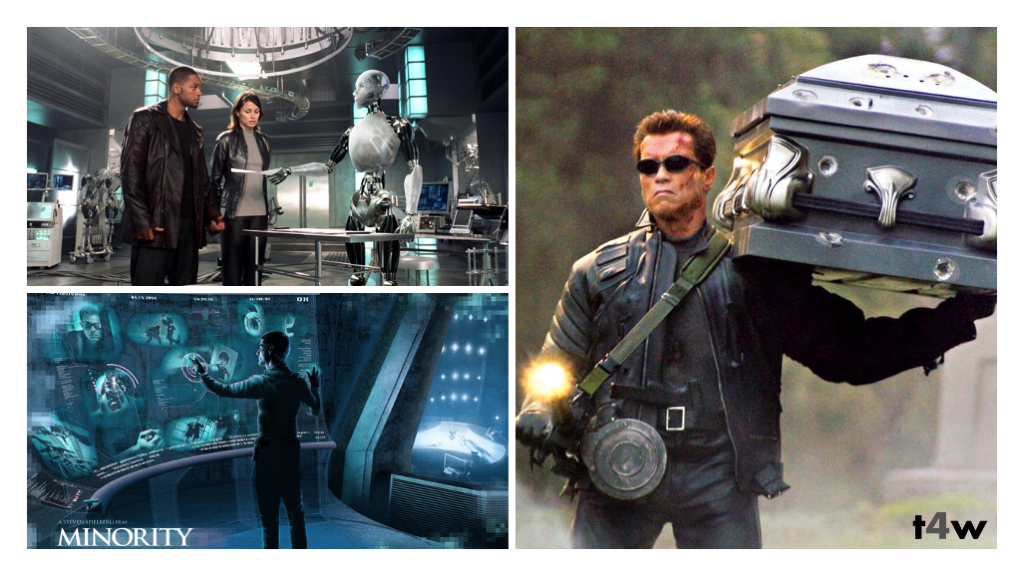
But is the technology shown in these movies really what Artificial Intelligence is able to do?
The best way to check this transported image of AI is by getting a basic understanding about Artificial Intelligence.
What is AI?
Let’s start with the definition of AI:
“AI is the simulation of human intelligence processes by machines.”
But what does this mean?
If we want to mimic human intelligence we need the abilities of Learning, Reasoning and Self-correction.
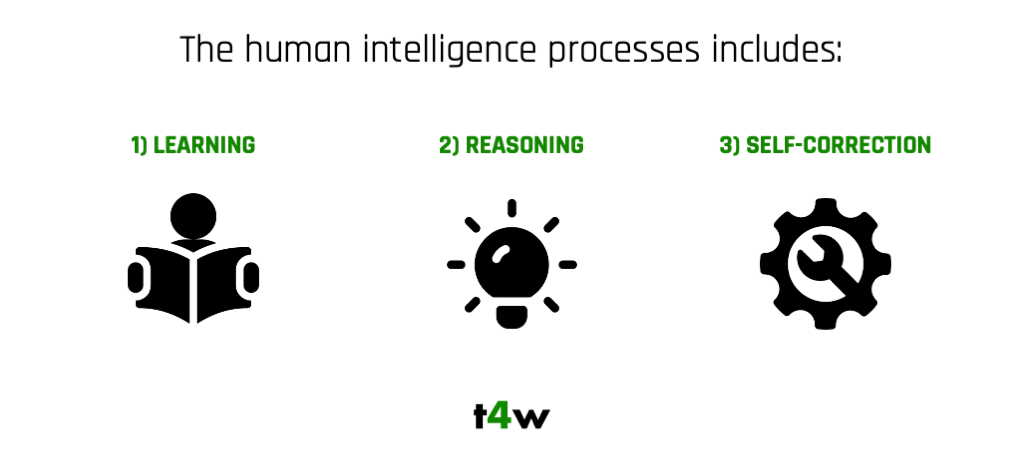
For a machine to simulate human intelligence it needs a software that is able to learn, to make decisions and to rewrite its own code.
Sounds a little bit creepy and you may ask now how this is even possible?
To answer this question we have to consider how we learn and how we make decisions. These basic human characteristics are all based on information and experience.
For instance if we want to learn a foreign language, we need a basic understanding about the vocabulary and grammar (information), then we have to use it a lot (experience), and with more and more training we are able to use the language more properly.
The same holds true for Artificial Intelligence, only that information and experience are provided as data.
What is data?
The easiest example is to think about a simple table filled with information. For a software going through all this table rows and analysing which piece of information in this table row was paired with a certain result, this procedure is what engineers call to train a software (see Picture 2).
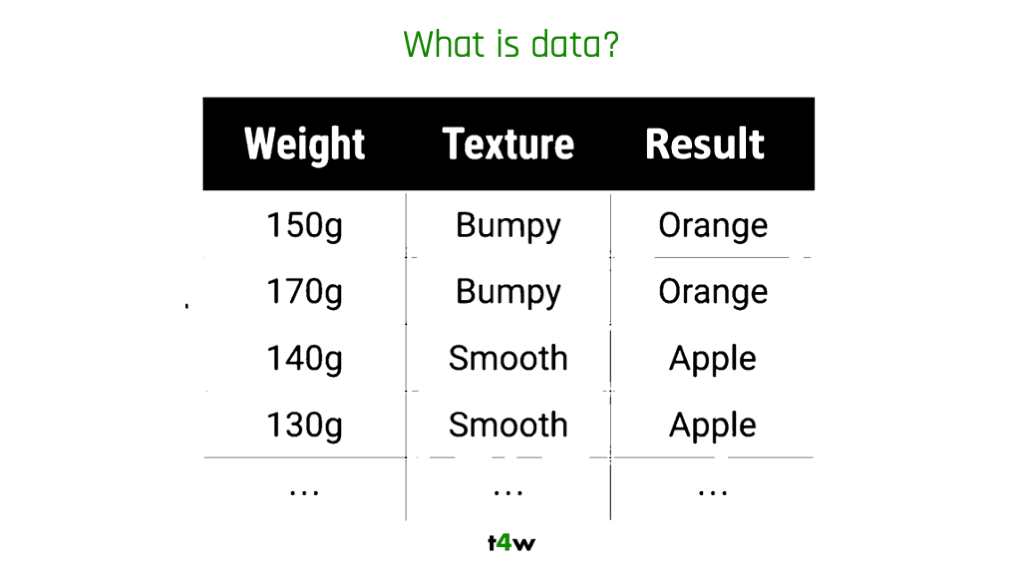
This means, provided with enough data, an AI based system is able to find the winning patterns in the data by itself and also to write its own rules to make decisions.
This is really a huge change in programming machines as we know it because If we look at traditional approaches it is all about human developers programming rules. Sticking with the example above, if the weight is bigger than 150g and the texture is bumpy then we have an orange fruit (see Picture 3). Choosing an AI approach you teach the machine algorithms to take all this data and find out by itself how to classify an orange or an apple.
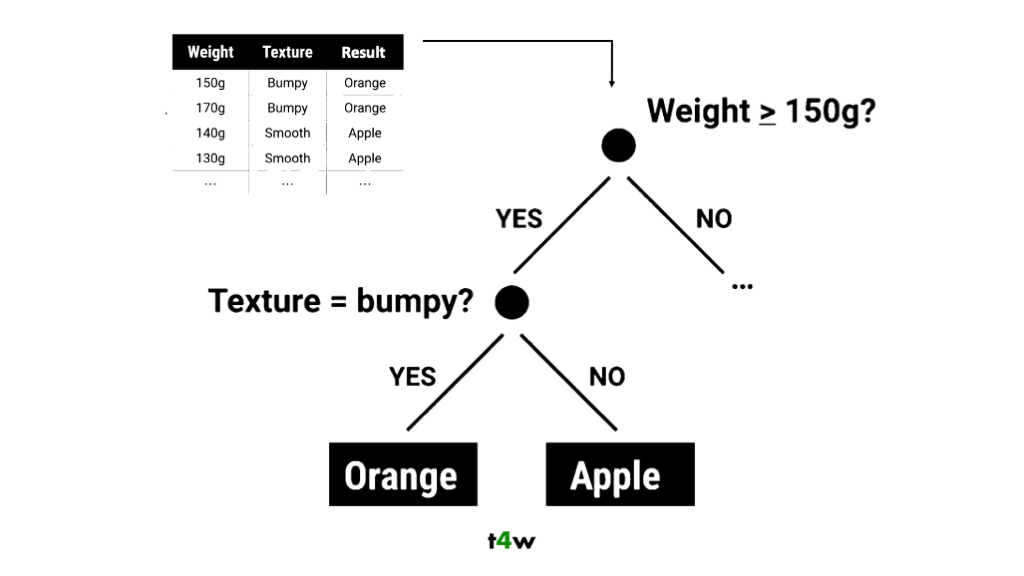
And this takes the burden from the software developers to the data engineers. That’s why the job Data-Scientist is becoming one of the most wanted job profile on the job market nowadays.
Let’s quickly summarize at this point what AI means:
“AI means that a machine is able to write and rewrite its own code by analysing given data.“
How far is AI?
Now we want to investigate how far we are in the development of AI. Actually there are two categories of AI. There is “Weak AI”, and “Strong AI” also called “Artificial General Intelligence (AGI).
Weak AI
Weak AI is an intelligent system that is designed and trained for one particular task.
Let’s say you have a self driving car. This car uses a piece of software that enables the car to drive in our traffic system by training the software with enough traffic data (see Picture 4). The same piece of software however will not be able to fly a plane. It is just trained to do one thing, to drive a car.
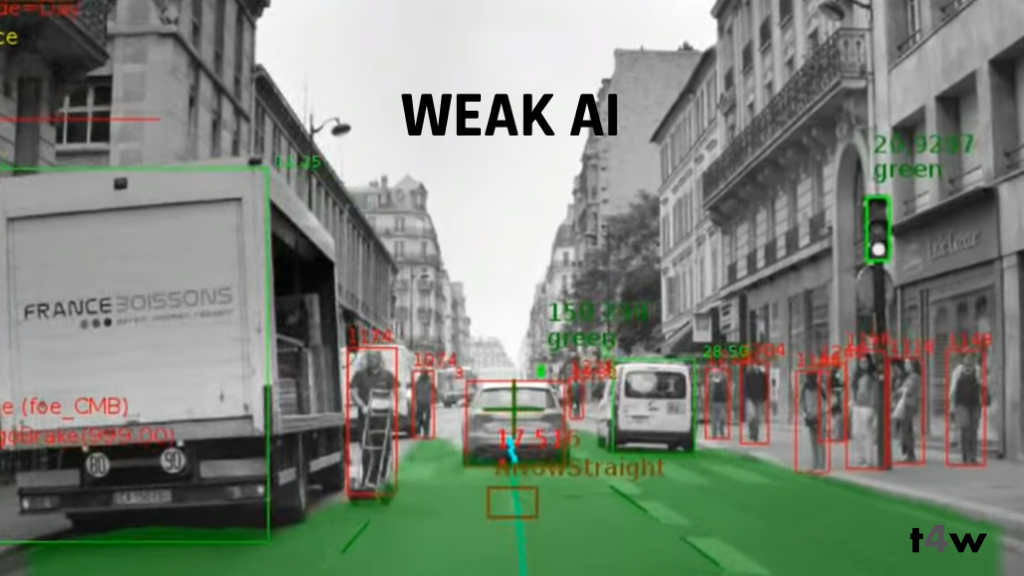
Strong AI
On the other hand, strong AI is an AI system with generalized human cognitive abilities. When presented with an unfamiliar task like flying a plane, it has enough intelligence to find a solution.

Don’t panic, at this point we are not capable of building strong AI Systems but if we look at the speed of the latest developments, the case for Strong AI becomes more valid every day.

While Scientists have been researching in the field of AI since the 1950s, most of the actual used approaches were invented in the late 80s. Something must have happened, that accelerated the development of AI dramatically in the last years.
Eventually there are two main drivers of AI.

First of all is our improved technology
We are capable to compute a much larger amount of information in a shorter time.

The second one is our new way of life
We are creating literally a flood of data through our digital lifestyle. Everytime we use our smartphones or our social media accounts, we leave our digital footprint. This data can be used by machines to find out the winning patterns of human behaviour..
How to learn more about AI?
If my post inspired you to learn more about AI then here comes the good news:
You don’t have to be a scientist or a maths genius to understand how it works. There are super easy starting points to get a deeper understanding:
- If you like slides I really recommend the slide deck from Jason Mayes (Google) – Machine Learning 101
- If you are more the youtube person then watch the series of “The Age of AI“ hosted by Robert Downey Junior
- If you like eLearning and if you are interested in coding then there are very understandable courses on Udemy like “Machine Learning A-Z”
Feel free to write a comment or an email if you have questions. Feedback is also always very welcome 😉




Leave a Reply